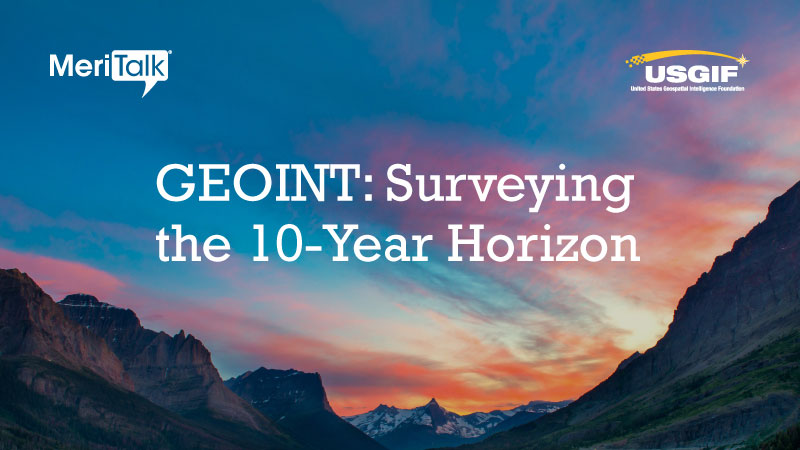
The majority of geospatial intelligence (GEOINT) stakeholders are optimistic about the future of GEOINT, but most don’t have a formal strategy for their 10-year vision, according to new research from MeriTalk, in collaboration with the U.S. Geospatial Intelligence Foundation (USGIF).
For the GEOINT 2023 Symposium’s Surveying the 10-Year Horizon report, MeriTalk and USGIF surveyed 100 GEOINT stakeholders within the Federal government, state and local government, and higher education. We asked stakeholders to envision the next decade of geospatial intelligence in terms of workforce, technology, and processes.
The survey revealed that while the future of GEOINT is bright, it is also largely unplanned. Three in four of stakeholders said they are optimistic about the future of GEOINT, but just one in four have created a formal strategy for their 10-year vision.
Additionally, 84 percent agree government organizations are underutilizing GEOINT technology.
However, 98 percent have taken at least one step to prepare for future GEOINT advancements. The most common actions include evaluating computing, network, or storage needs (46 percent); increasing workforce training (45 percent); and modernizing infrastructure (42 percent).
“It’s a matter of continually seeking innovation. “You can’t be complacent,” one GEOINT stakeholder said. “Adversaries are constantly seeking new ways to do things, so we have to be faster.”
The survey found that fewer than half of stakeholders are very confident in key GEOINT-related capabilities, such as data collection (48 percent), data analytics (46 percent), data security (41 percent), and data-driven decision-making (39 percent).
Going forward, GEOINT stakeholders see a need for improved data analytics and say it will be a top area of investment over the next two years – along with cloud computing and data warehousing.
When asked what it will take to be a future GEOINT leader, one stakeholder said “the main thing is to let the data lead us to where technology needs to go next.”
“Be open to the ideas coming from the workforce who may have more experience in the latest technology,” another said.
To dive more into foreseeable challenges, strategies for success, as well as recommendations for GEOINT professionals, download the full report.
